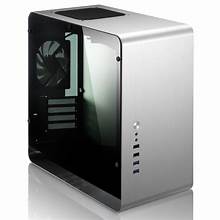The Case
the computer case functions as both a protective housing and an organization system for the computer's internal components while contributing to cooling, noise reduction, aesthetics, and expansion capabilities. It plays a vital role in maintaining the computer's integrity and functionality.

The computer case, also known as the chassis, serves several important purposes and functions:
Protection:
The primary role of the case is to protect the internal components of the computer from physical damage, dust, and other environmental factors that could harm them.
Organization:
The case provides a structured and organized space for mounting and securing all the essential computer components, such as the motherboard, CPU, RAM, and storage drives.
Cooling:
Most computer cases are designed with fans and ventilation to help dissipate heat generated by the internal components. Proper airflow within the case is crucial for maintaining the computer's temperature within safe limits.
Noise Reduction:
Some cases are designed with noise-dampening materials to reduce the sound generated by the internal components, creating a quieter computing environment.
Aesthetics:
Computer cases come in various designs and sizes, allowing users to choose one that matches their style preferences. Some cases also have windows or LED lighting for visual appeal.
Expansion:
Computer cases have slots and bays for adding additional components and peripherals, such as optical drives, graphics cards, and extra storage.
Accessibility:
Cases provide external access to the computer's ports and connectors, allowing users to plug in peripherals like monitors, keyboards, and USB devices.